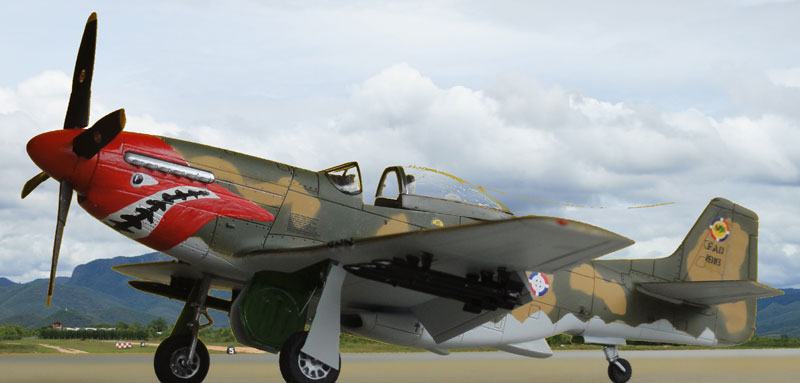various air forces
[ page 1 ]
North American P-51 Mustangs model kit in 1/72 scale
Page 1
Page 2
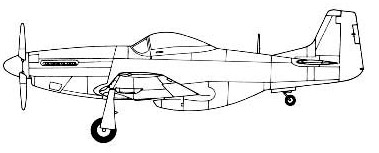
The American North American P-51 Mustang was developed in the end Nineteen Thirties following a British Specification as the threat of the Second World War emerged. The design of North American was for a high speed and long range aircraft that would operate along side the Spitfires of the RAF. The P-51 utilized a (partially) laminar flow wing, reducing drag and giving longer range. With the Second World war in 1939 there were urgent needs for aircraft.
Various versions of the P-51 were developed, including the P-51D that got a license built Merlin engine, had a large canopy hood for better pilot view and an improved armament. Drop tanks were also possible and the P-51D was able to escort Allied bombers all the way to Germany with its range of about 3700 km. It was first used as fighter but later also for ground attack. Although not without its faults, the P-51 was an important aircraft.
After the Second World War, the P-51, now redesignated the F-51, was used for ground attack, fitted with rockets and bombs, and photo-reconnaissance, rather than being as interceptors or "pure" fighters.
When the USAF stopped using the P-51 / F-51, many were dumped. Some went to "friendly Americans back yard" Central and South American countries that used them in their Air Forces.
( Some further F-51 development took place by the Cavalier Aircraft Corporation, and they got refurbished and new V-1650-7 engines, a new radio fit, tall F-51H-type vertical tails, and a stronger wing that could carry six 0.50 in (13 mm) machine guns and a total of eight underwing hardpoints. Two 1,000 lb bombs and six 5 inch rockets could be carried. They all had an original F-51D-type canopy, but Cavalier Mustangs carried a second seat for an observer behind the pilot. )
Source: Wikipedia.
After modelling the very nice P-51D in 1/32 of Tamiya, the good old but revived Airfix came with very neat kit of the P-51 and F-51 in 1/72 scale. From the beginning of plastic modelling really dozens of plastic kits have been there, with the best one in 1/72 being the Tamiya kits. Now AIRFIX came with a splendid new kit in the beginning of 2013 and it is very cheap.
The kit came in two boxes: the P-51D kit #A01004 and F-51D kit #A02047. The latter has an extra sprue with bombs and the rockets.
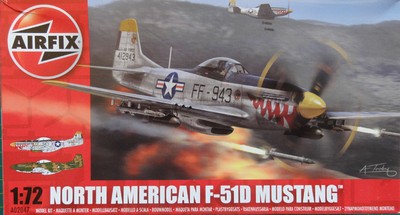
The Airfix
F-51D
kit has soft very light blue-grey plastic. The panellines are engraved
and may be a little deep for the scale. The rudder and trailing edge flaps
are separate and can be set in an angled position. The cooling radiator
rear door can be drooped as well. The undercarriage doors have inside details
and the wheel bays look good enough to me. The gear legs are a bit fragile
but fine. When the rockets are bombs are added, their fittings or pylons
need drilling open up the holes in the lower wing. Two drop tanks are provided.
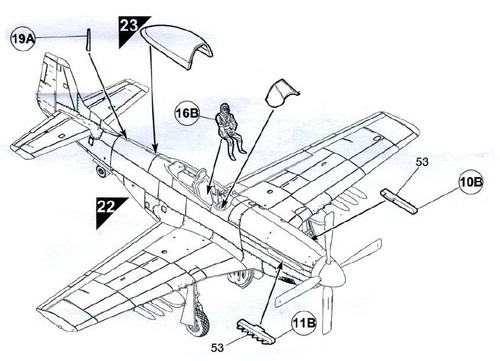
Inside are also 2 types of rear clear
canopies / cockpit hoods are in the kit, including the "Dallas type" which
is a bit bigger.
The cockpit interior is adequate for the scale. And there
are 2 types of propellers in the kit with rounded tips or squared for the more powerful engine.
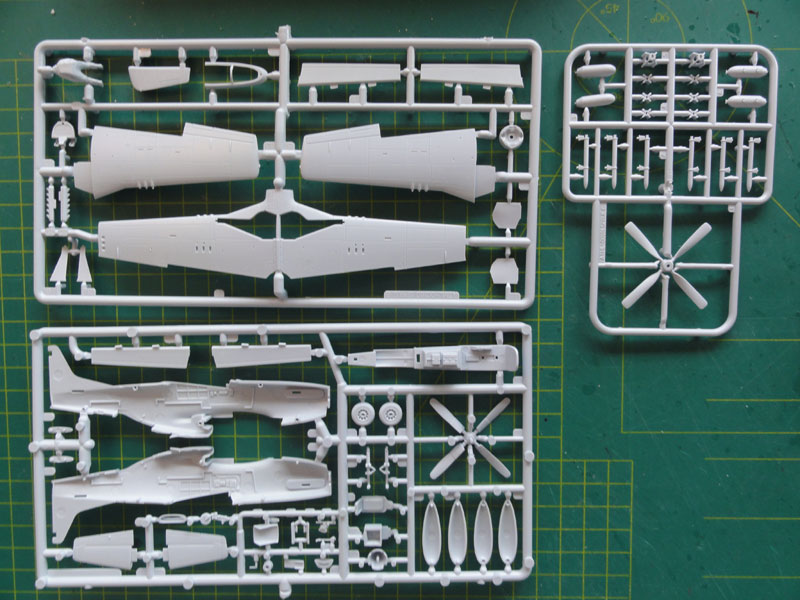
Decals in the F-51D box A02047 are
for:
(1) USAF unit of the 12th FBS of
the 18th FBG as used in Korea during 1952 in a metallic scheme.
(2) Dominican Republic AF plane with
very special camouflage with light lower surfaces and brown and greens.
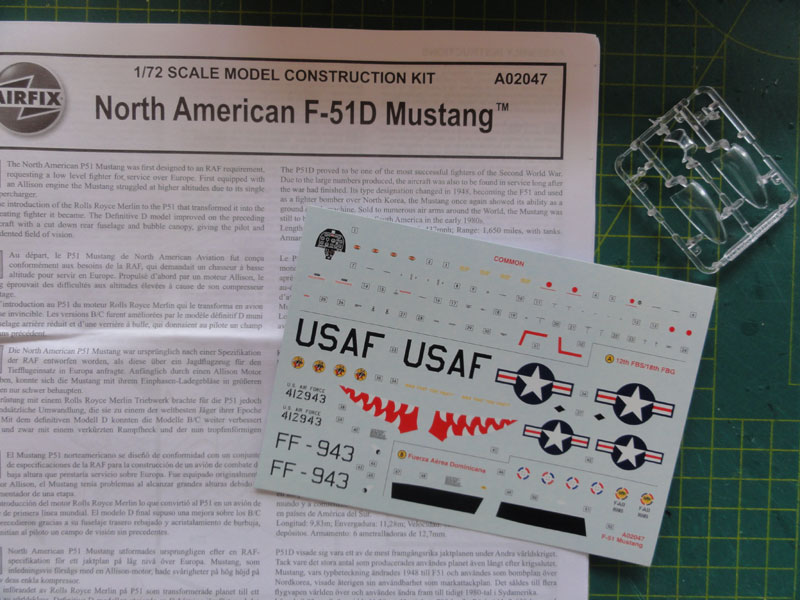
This Airfix kit is very inexpensive, a nice kit
and I bought 3 of these for my World Air Forces model series!
The F-51D kit has the same parts
as their P-51D kit, but with additional sprue and other decals. So when you
want to make big series of kits, the F-51D is recommended as it has extra
parts.
The assembly of this kit is very easy. Only a very tiny amount of putty was needed, at the cooling radiator, lower nose and wing-fuselage lower joints. But little indeed.

The flaps were set drooped, which
is an option for this kit, a nice touch as many parked P-51's show them drooped. The various wing holes were drilled
open for the pylons and rockets. Also note the nice signal lights at the
wing tip.
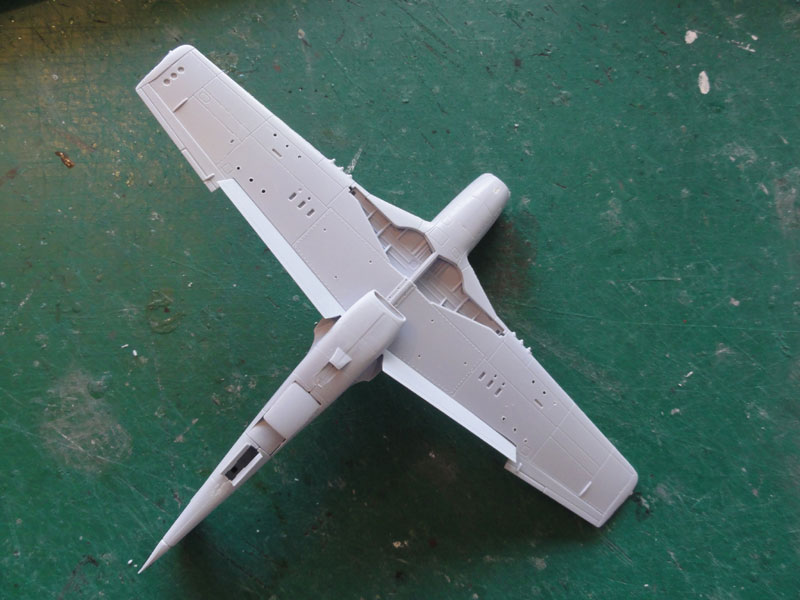
Later on, sometimes on Mustangs,
the tail wheel doors were not used and removed.
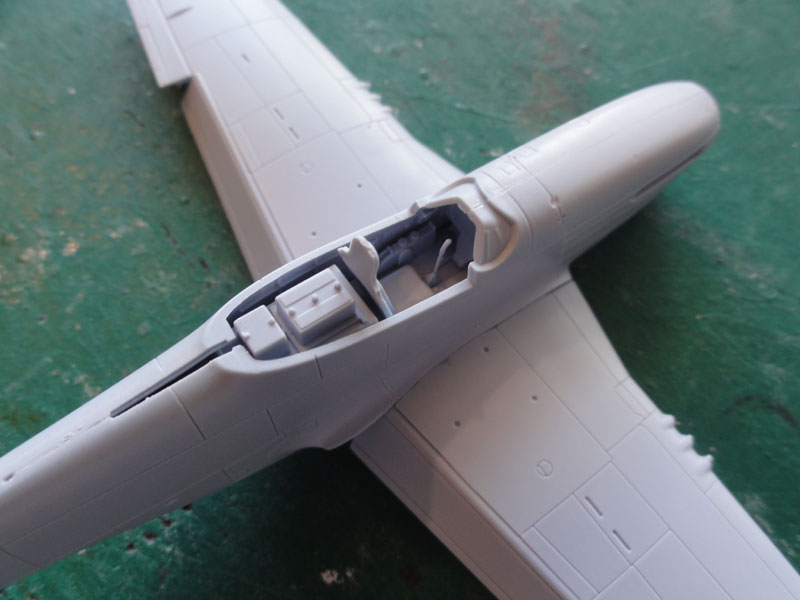
The canopy is on a frame and can
be slided to the rear. The separate lower hood frame
requires care to fix the clear hood without stains. The wind screen has
nog lower frame moulded so is difficult to fix. I recommend
Microscale Kristal Kleer to fix them in place.
Cockpit interior is seen here and below the wheel bay detail. Good enough for 1/72 scale.
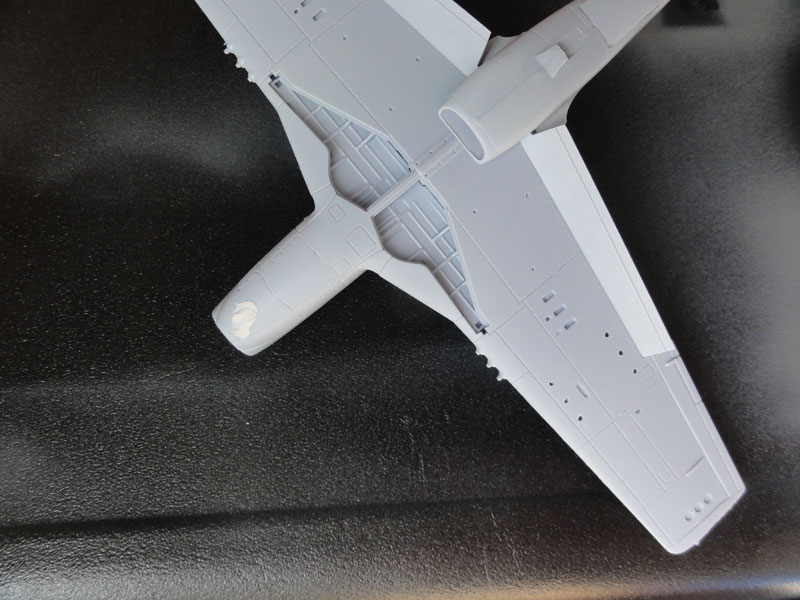
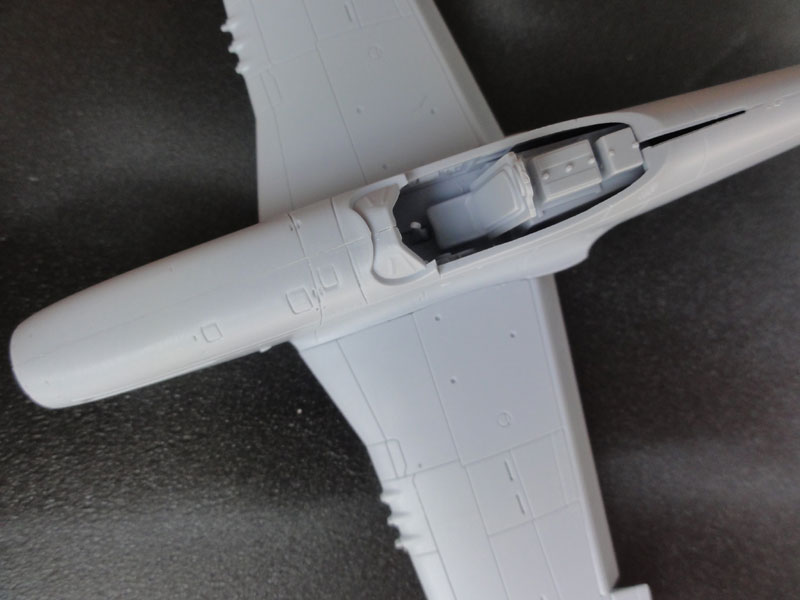
A few panel lines seem missing at the horizontal stabilizers. Inscribing can be done. An antenna wire runs from canopy to the tail. Often, the antenna wire line is a bit drooped when the canopy slide to the rear. I using very thin fishing line running from the canopy to the tail. Note that not all Mustangs had this wire antenna.
As noted, 3 kits were purchased of
the "F-51D". They were made as 3 small Central America air force aircraft.

F-51D Fuerza Aerea Dominicana
For this model I used the bigger Dallas
canopy #5D and propeller #2A.
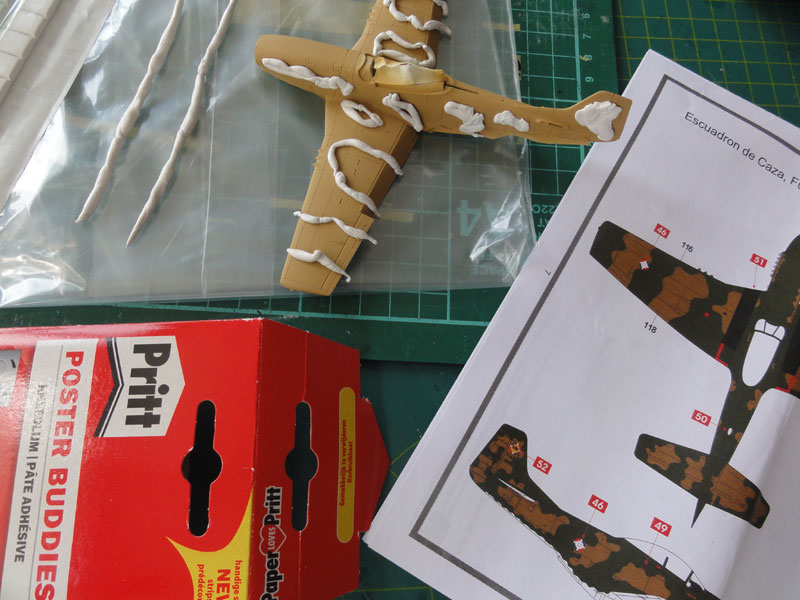
The camouflage colour pattern is
nicely shown in the Airfix instructions.
First, the lower light colour was airbrushed with the Harder Steinbeck airbrush, using FS 36222 (not white as Airfix suggests) with Gunze Sangyo H314 acrylic . After the lower areas were masked off, the brown was airbrushed, using Revell Aqua "Ocker" #88 acrylic.
The camouflage pattern should be soft and in 1/72 a nice method to mask is to use "Poster Buddies". This is flexible gum stuff, here of the brand PRITT. Rolls were made and put on the model. My airbrush is so fine, no further masking was needed. The green colour airbrushed was about FS 36079, using Gunze Sangyo H309 acrylic. After drying, the PRITT was removed and the nice camouflage pattern is there.
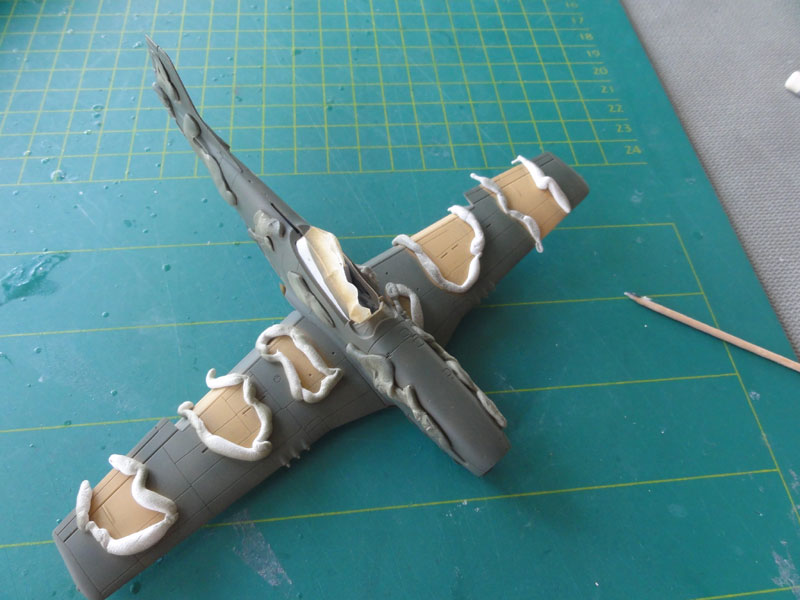
I deviated a bit from the kit scheme as a Dominican F-51D aircraft coded "FAD 1916" had a shark mouth. This was handpainted on the nose with a brush using a drawing found on the internet with plain red-white-black colours. The prop spinner was also painted red.
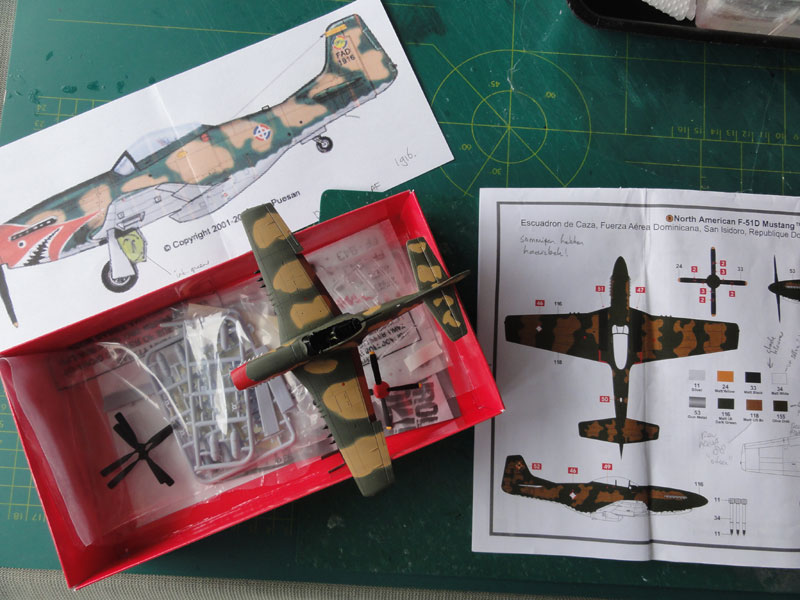
For the gearbays and door inner surfaces and also some areas of the cockpit interior I used the chromate interior green airbushed on, I forgot what paint no. I used though.... The pilot seat got some straps and belts made from tape.
Decals were used from the Airfix kit. I did not cover the entire model with a gloss undercoat, but used Johnson Future / Klear / Pledge in another way: each decal was "dragged through" some FUTURE and than applied. Dry and press with a piece of cloth. This prevents "silvering" , the effect that air bubbles get trapped below a decal spoiling the appearance after drying.
The final assemby was straight forward. Some rockets from the kit were also set under the wing, painted black. The propeller got a black colour with yellow tips. The propeller was fixed with drop of white glue.
Some slight weathering was done with a few drops of black wash using PROMODELLER black wash. After drying the model got a dull varnish coat using again Johnson Future/ Klear / Pledge but with 10% Tamiya Flat base X-21 matting agent mixed in.
That completed a nice Fuerza Aerea Dominicana F-51D as based at San Isidoro base in 1984.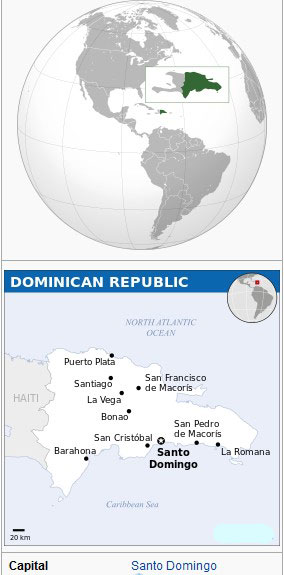
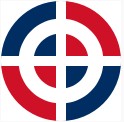
The Dominican Republic set up an army air force in 1933. In 1942 it took side for the Allies but the Second World war was hardly relevant in the region (except for German submarine attacks). Types were Kaydets and after the war some 10 P-38 Lightnings. In 1947 the 'Rio Treaty" was signed. The F-51D was delivered to the "Fuerza Aérea Dominicana" with first six aircraft acquired in 1948, followed by 44 ex-Swedish F-51Ds purchased in 1948 and a further Mustang obtained from an unknown source. It was the last nation to have any Mustangs in service, with some remaining in use as late as 1984! Some aircraft had a shark mouth.
From Sweden also some second hand 25 Vampires F1. (J28A) from 1956 were obtained, the first jets in the region. It appears an additional 17 Vampire FB.50 followed in 1957 because of the threat of Cuban backed insurgents. The Vampires flew until 1970. Other types were some 8 T-28 Trojans and a dozen T-34 Mentors and the T-33.
Later on the USA supplied from 1984 also some 8 Cessna OA-37B aircraft and a large variety of helicopters. Latest types includes Super Hueys. A mixed fleet of transports is also operated though in small numbers including some CASA CN.212. Some 8 EMBRAER Super Tucanos delivered from 2009 now seem to have replaced the OA-37's. Mid 2024 it was announced that 7 second-hand ENAER T-35C basic trainers were acquired from Spain.
Various bases seem to be in use but the serviceability of the aircraft is a bit unclear.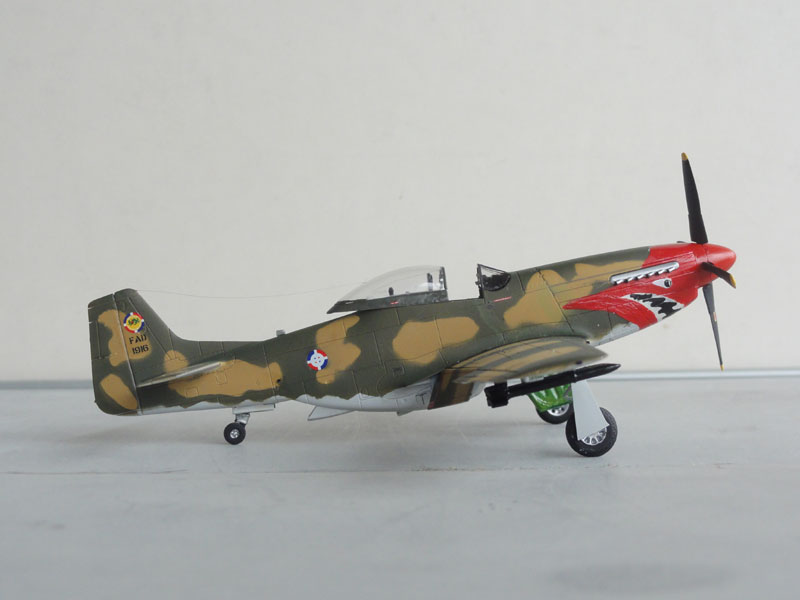
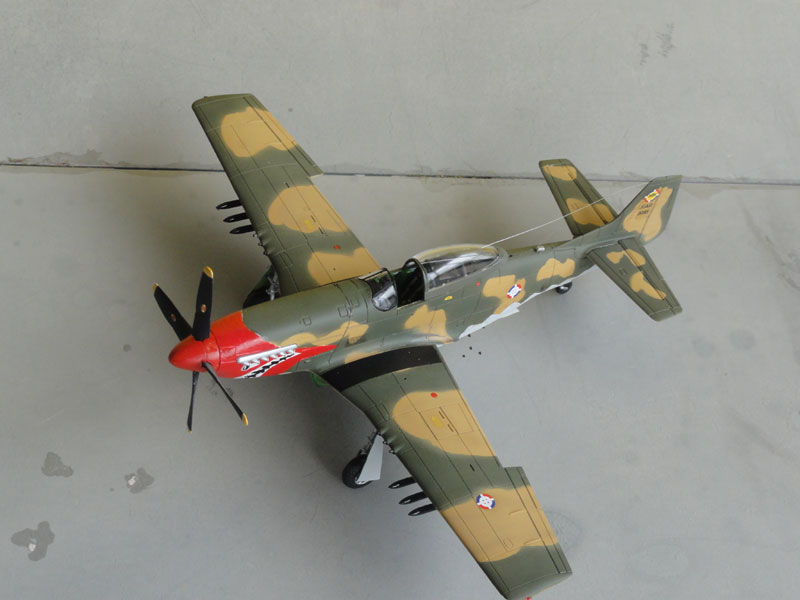
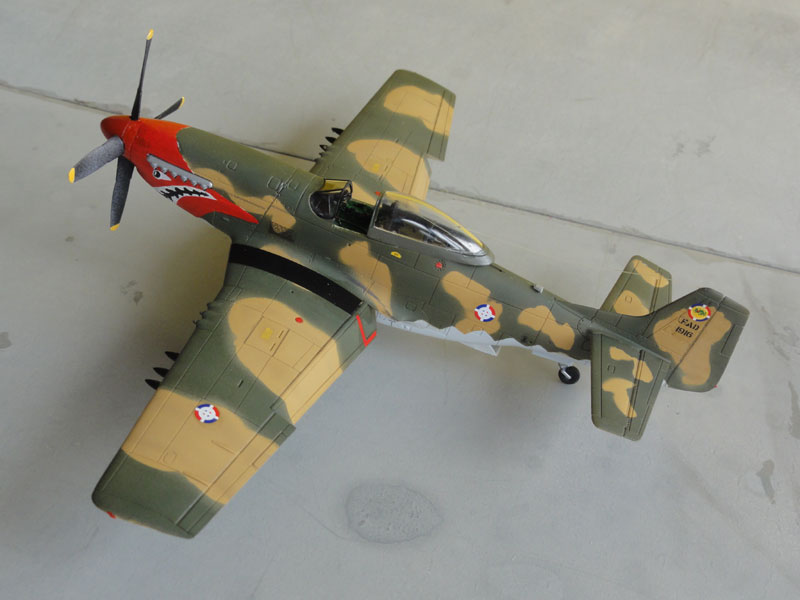
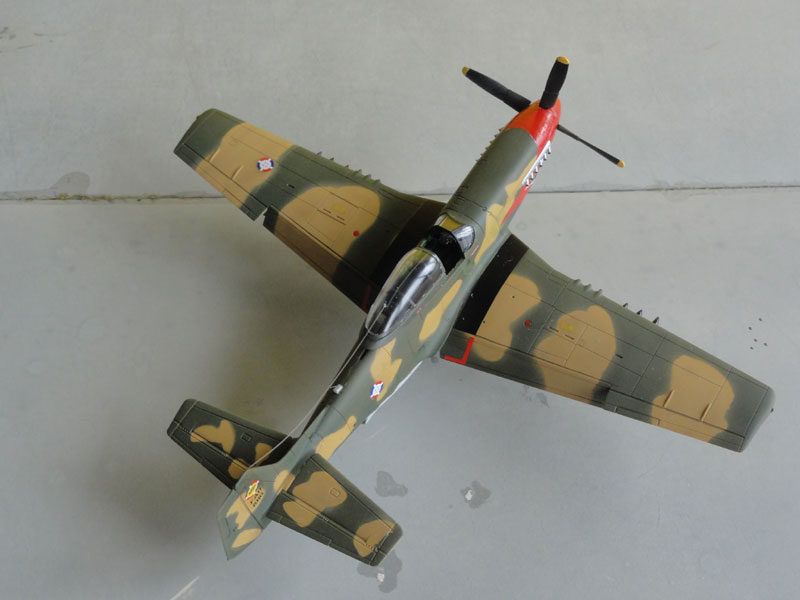
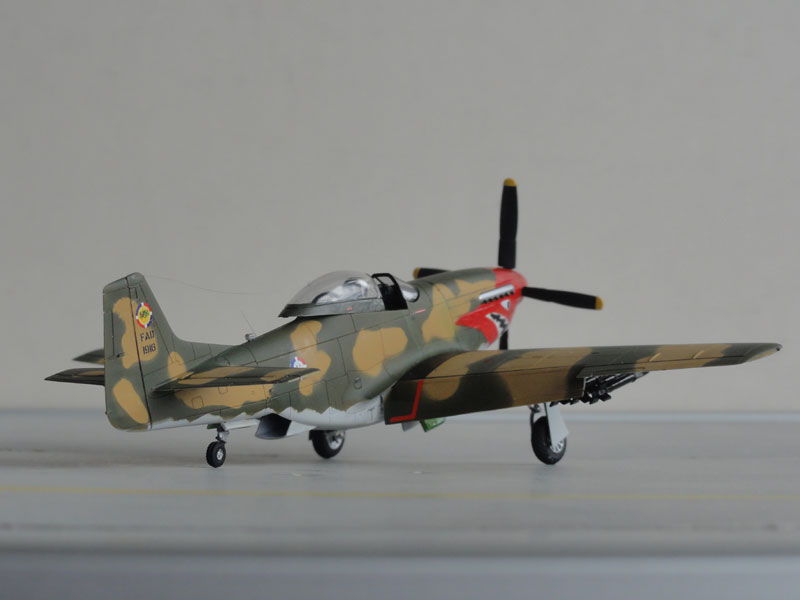
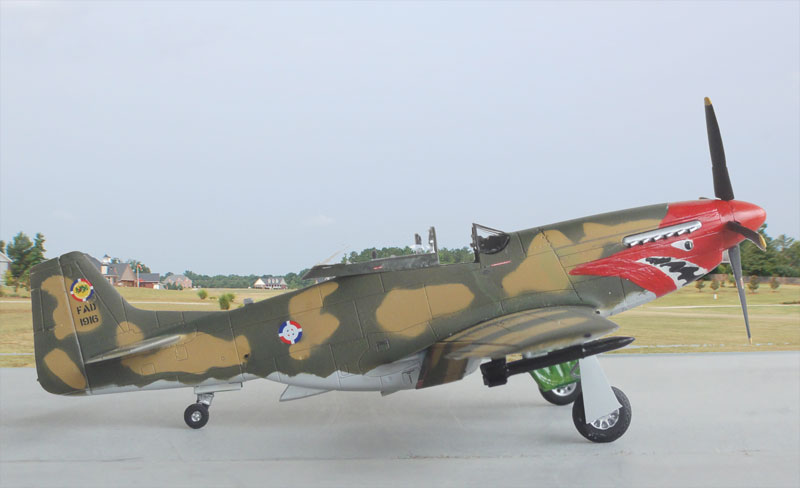
On to next [ Page 2... ]
References
Web:
http://en.wikipedia.org/wiki/North_American_P-51_Mustang
IPMS NL P-51
Walkaround
Back to 1/72 scale Models.......

(c) Copyright Meindert "designer"/ All rights reserved. Your comments are welcomed by webmaster
